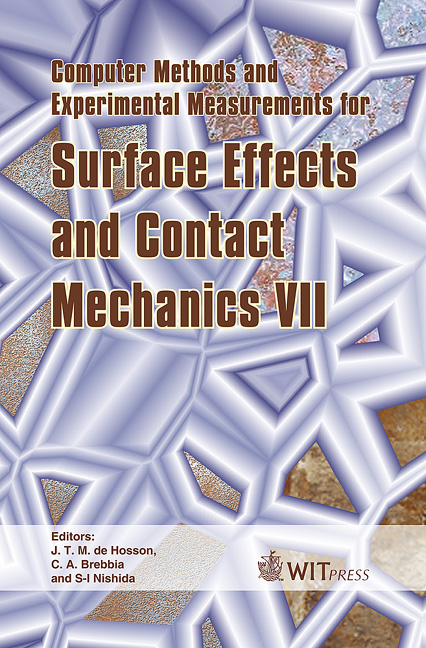FE Contact And Thermal Simulation Of An Alumina-steel Dry Sliding Friction Pair
Price
Free (open access)
Transaction
Volume
49
Pages
10
Published
2005
Size
927 kb
Paper DOI
10.2495/SECM050041
Copyright
WIT Press
Author(s)
Z. Lestyán, K. Váradi & A. Albers
Abstract
In this study FE contact and thermal sliding analysis of an alumina-steel dry sliding friction pair was performed to investigate the real contact area, the contact pressure distribution and the temperature distribution considering the real worn topographies. A friction test was carried out to simulate the dry sliding friction of sliding pairs on the test rig designed for this purpose. The applied algorithm describes the real processes of the contact area formation, although local micro-level calculations will be necessary in the future. Keywords: dry sliding friction, real contact area, contact temperature. 1 Introduction Ceramics structural components provide novel opportunities for engineers due to their exceptional static and tribological characteristics. High purity alumina ceramics have some advantages such as good heat conduction, thermal stability, wear resistance, and high compression strength; they provide a promising friction material for clutches, CVTs, and brakes. Nevertheless, the properties of ceramic materials are unknown or only partially known in a number of areas. In the course of development, the special mechanical properties of ceramics require a new approach in terms of design and sizing. This requirement particularly applies to complex loads, such as sliding friction. Heat generation plays a dominant part in the behaviour of tribological systems of dry sliding friction. The investigation of heat generation requires contact phenomena to be studied. Characterization of the real tribological process requires the joint investigation of
Keywords
dry sliding friction, real contact area, contact temperature.





